Part 20: Mexico to French Polynesia
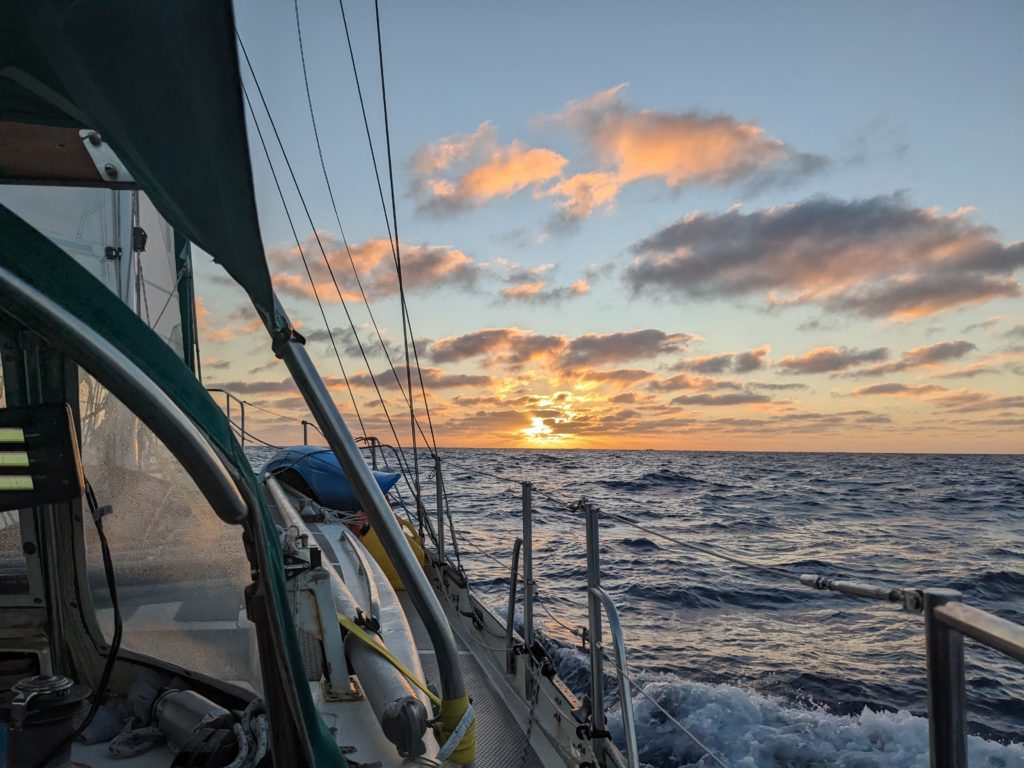
In 2002 Sarah and I had been dating for just over a year. We were in our early twenties, fresh out of school, with no real plan ahead of us. Sarah had a strong desire to travel and see the world, but me, I wasn’t so sure. Who needs the world, when you have the world wide web? Would there be enough washrooms out there in the world? Because if you need to use the washroom, but you can’t find a washroom, well, that isn’t a great situation.
Ultimately my affection for Sarah won out and we took a flight to Fiji, where we boarded the tall ship Alvei, as paying crew. We had zero sailing experience, but we spent 2 months sailing around the Fijian archipelago, and then we made a 3 week passage to New Zealand. I have a clear memory from that 3 week passage, of being very bored and thinking to myself: Sailing is overly romanticized, long passages suck, I won’t need to do this again.

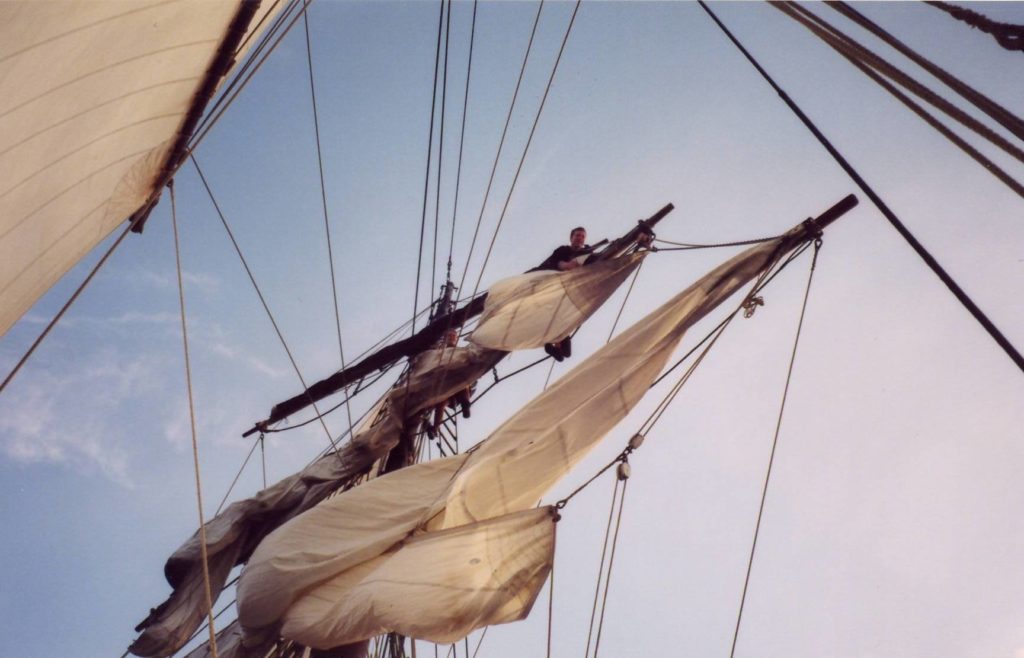
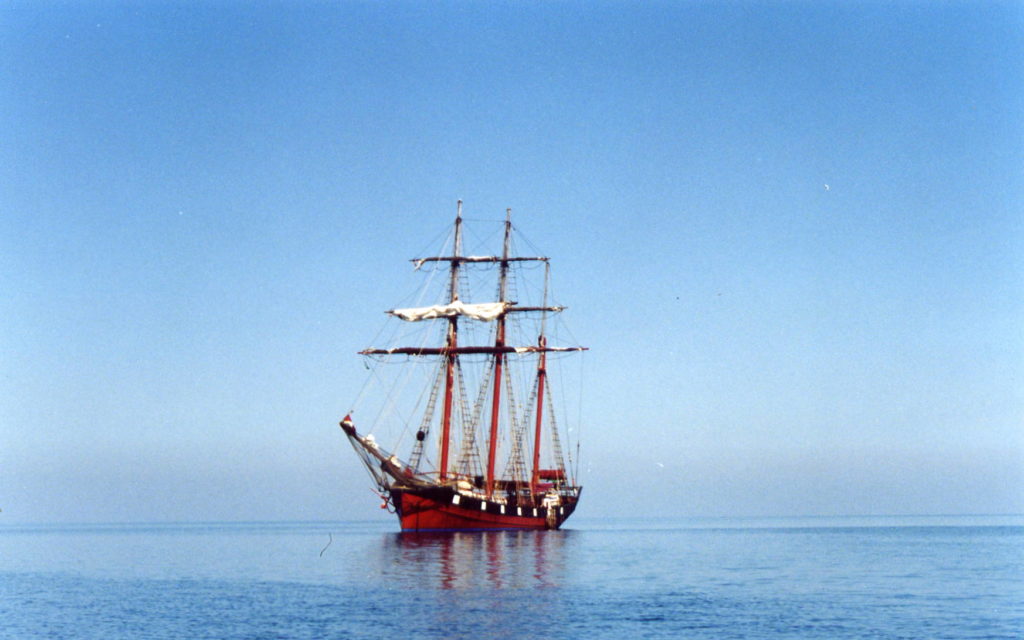
That experience sparked an interest in sailing and a fascination with the South Pacific which leads us back to the present moment. 20 years later, the voting members of this family had decided that it would be a great idea to sail from Mexico to French Polynesia. 3000 miles and 3 or 4 weeks at sea. To my 23 year old self I now say: Manage your expectations better (and if you can hear me, buy bitcoins).
On March 9th we raised our anchor in Mexican waters for the last time and set off westward. Within a few minutes a humpback whale surfaced, much too close to the boat (those rules are for your safety!), and seemed to wave goodbye. And we were off!
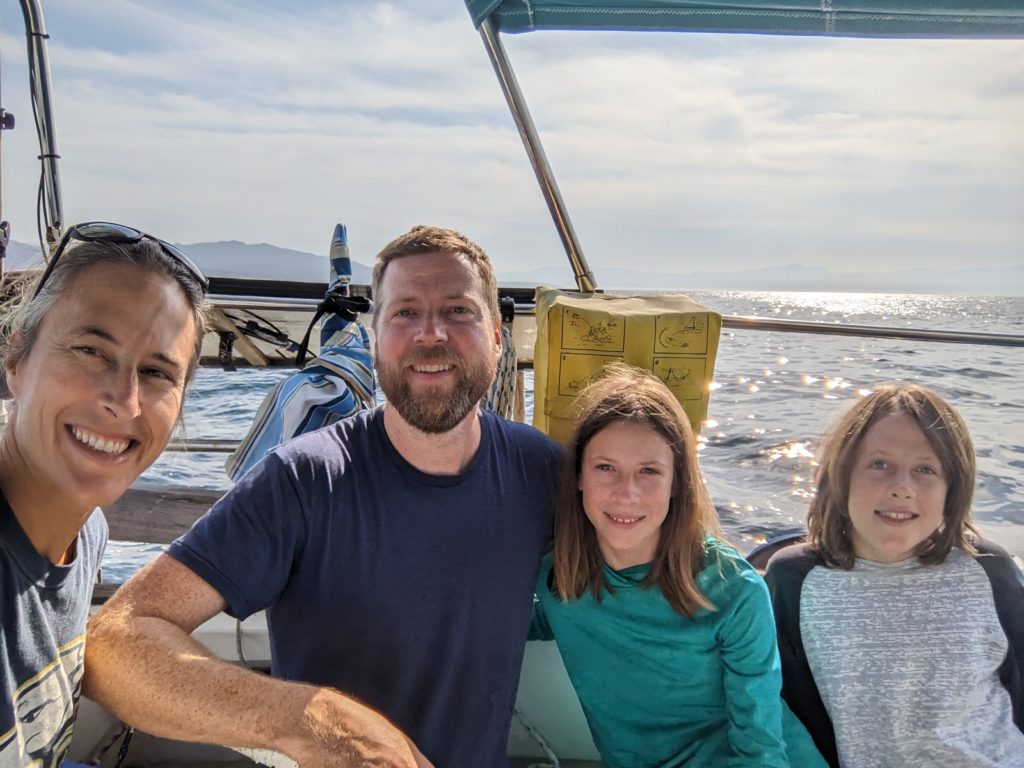
Phase 1: Westing, day 1 to 5
The first part of the passage was tricky, we needed to make westward progress through the variable weather patterns near the continent to get out into the more stable offshore weather systems. We had to make a lot of sail changes, we were becalmed a few times, and were still developing our seasickness resistance and offshore routines. We ate a lot of bananas during this time.
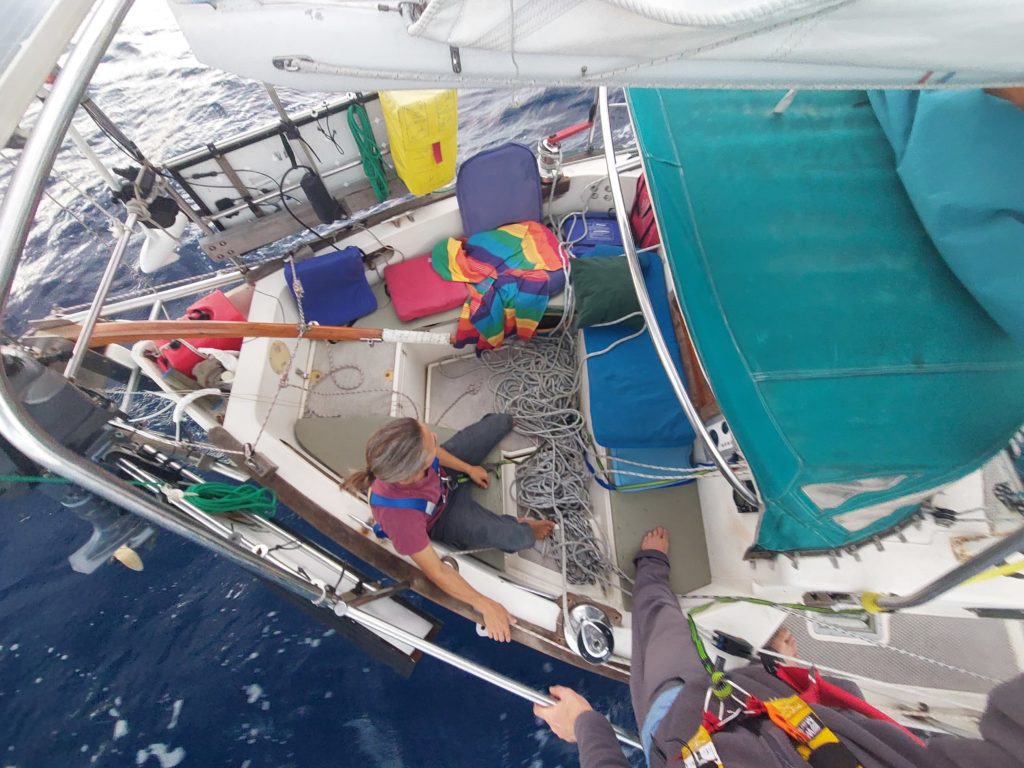
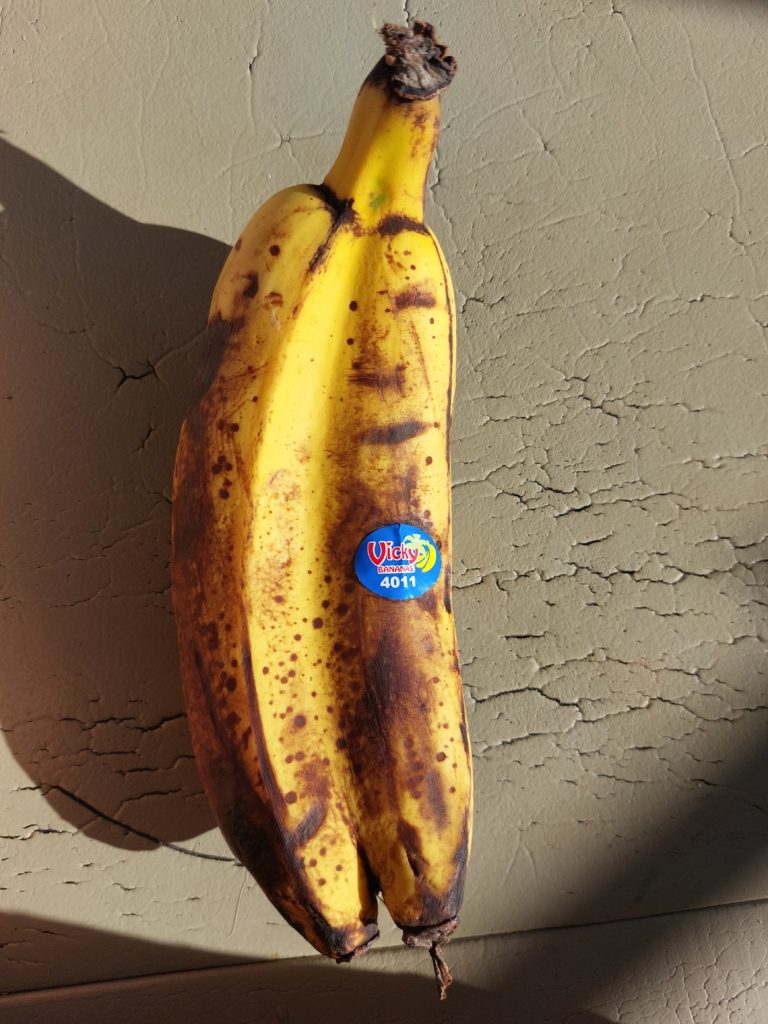
Phase 2: Running down to the ITCZ, day 6 to 11
Once we were far enough west, we commenced phase 2 of the operation: The run down to the ITCZ. The ITCZ (or doldrums) is a very mercurial band of weather near the equator that shifts north and south as it expands and contracts. It’s a hassle to transit in a sailboat, as the weather in this band is often squally, with very little consistent wind for sailing. You need to decide roughly where you are planning to cross the ITCZ when you’re still so far away that you can’t accurately forecast where it might be. So you look at the weather models and the historical patterns and you make a best guess.
As our seagoing routine was established the days started to blend together. It’s quite a simple existence. Sarah and I took turns at 4 hour watches, around the clock. We’d eat, nap, snack, read, practice some french, and just generally try to manage our energy levels. We started to see a lot of flying fish, one of which managed to torpedo Sarah during a night watch.
One morning, over 1000 miles from any land, I heard the rumble of an engine and was shocked to see a small helicopter approaching the boat. We weren’t aware of any ships nearby. I called below for the family to come and see, while the helicopter hovered just off our stern. Helicopter guy waved to us Hello! We waved back Hi! He gave us an inquisitive thumbs up, All good? Thumbs up, we replied, Yes, we’re all good. He hit us with a hang loose gesture, Cool. We smiled at this and hang loosed him right back. And then well, what else was there to say? He waved again, Ok, bye! To which we responded with a very nuanced wave of our own, Goodbye helicopter guy, and thank you for our only human interaction in several weeks. You’ll always hold a special place in our hearts. Let’s keep in touch, here’s my number, or maybe check out our blog at www.raisethemain.com.
He smiled. He got it.
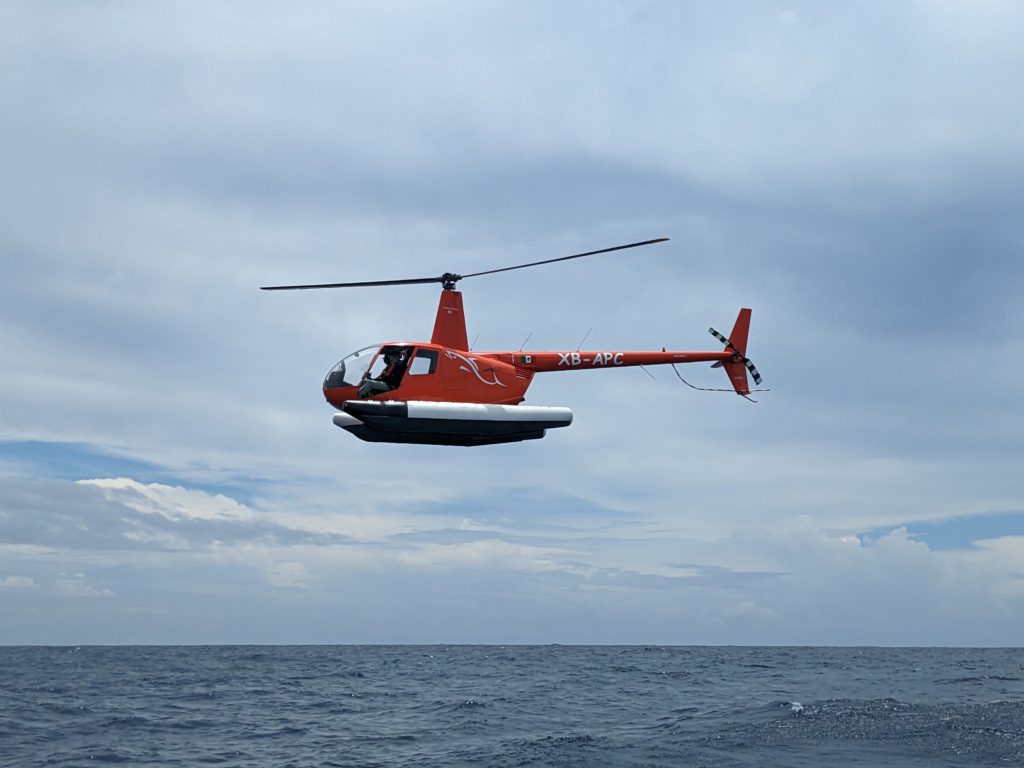
The next day I did a routine scan of the horizon only to see a boat directly in front of us, possibly a mile ahead. Suprising! We wouldn’t have hit it, but it was close enough that we altered course. What are the odds? With binoculars, I scanned the ship hopefully for helicopter guy, there was so much more we wanted to say. But this was not his boat.
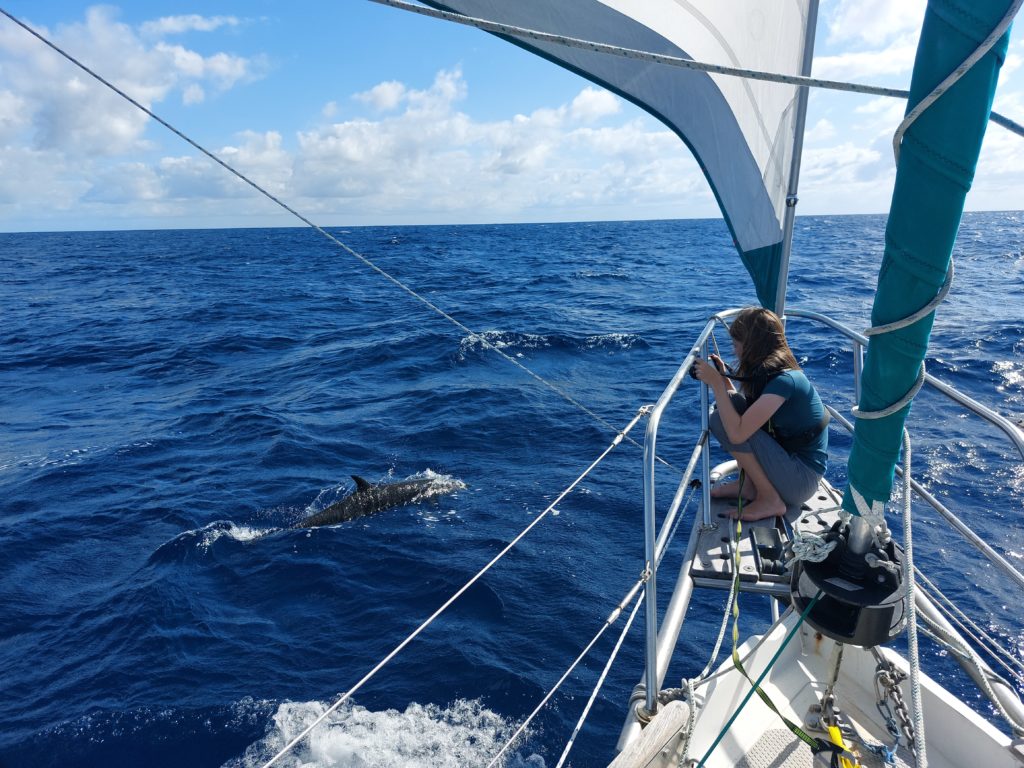

Phase 3: The ITCZ, day 12 to 18
As we approached the equator we started to experience squalls. Small bursts of weather which might include strong wind and/or intense rains. They normally lasted 20 or 30 minutes, but we encountered one monster of 3 hours. Because they didn’t last long, they didn’t really impact the sea state, which was nice. They were particularly annoying to deal with at night, as they would require a bit of work to reduce sail and/or change course, then generally leave us soaked.
If ever there was a moment of doubt about the sanity of this undertaking, it was during these squalls. “Remind me why we’re doing this?”, says Sarah, thoroughly soaked and a little grumpy after dealing with her evening watch full of squalls.
“We’re here to meet new people Sarah. Remember helicopter guy?”
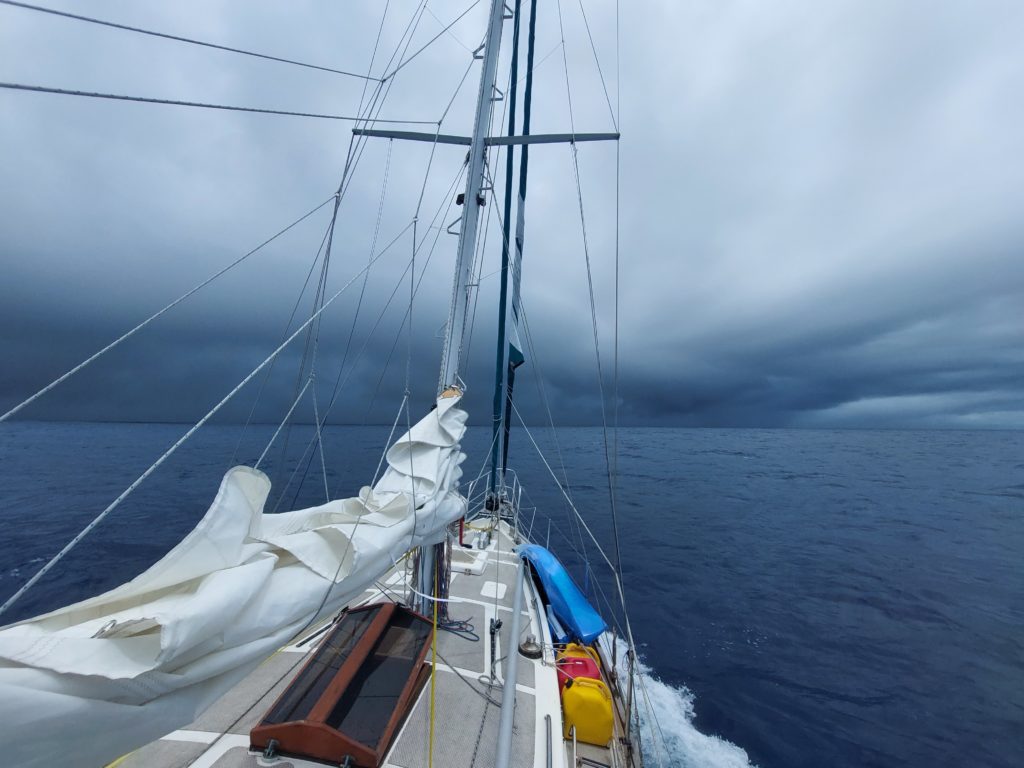
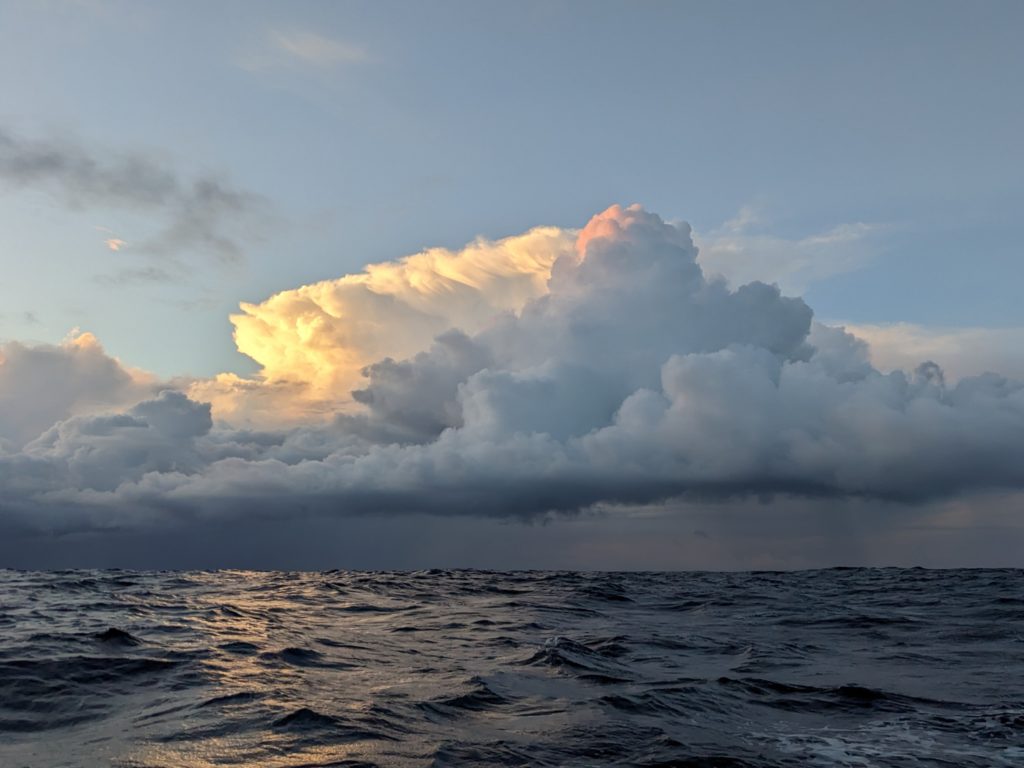
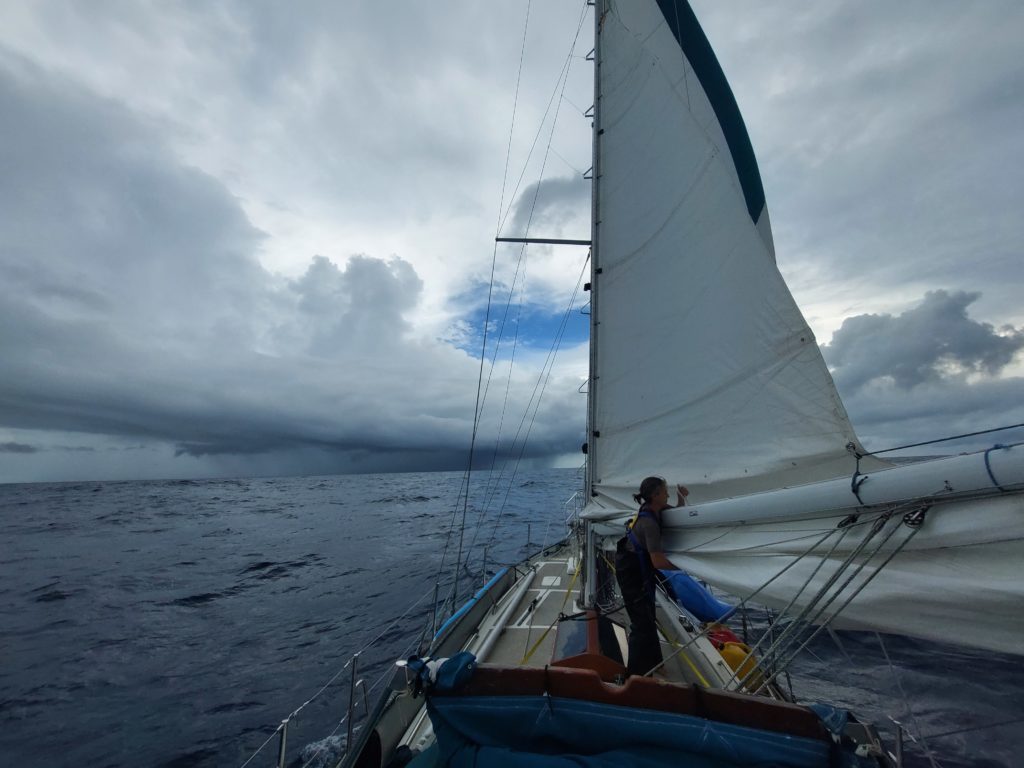
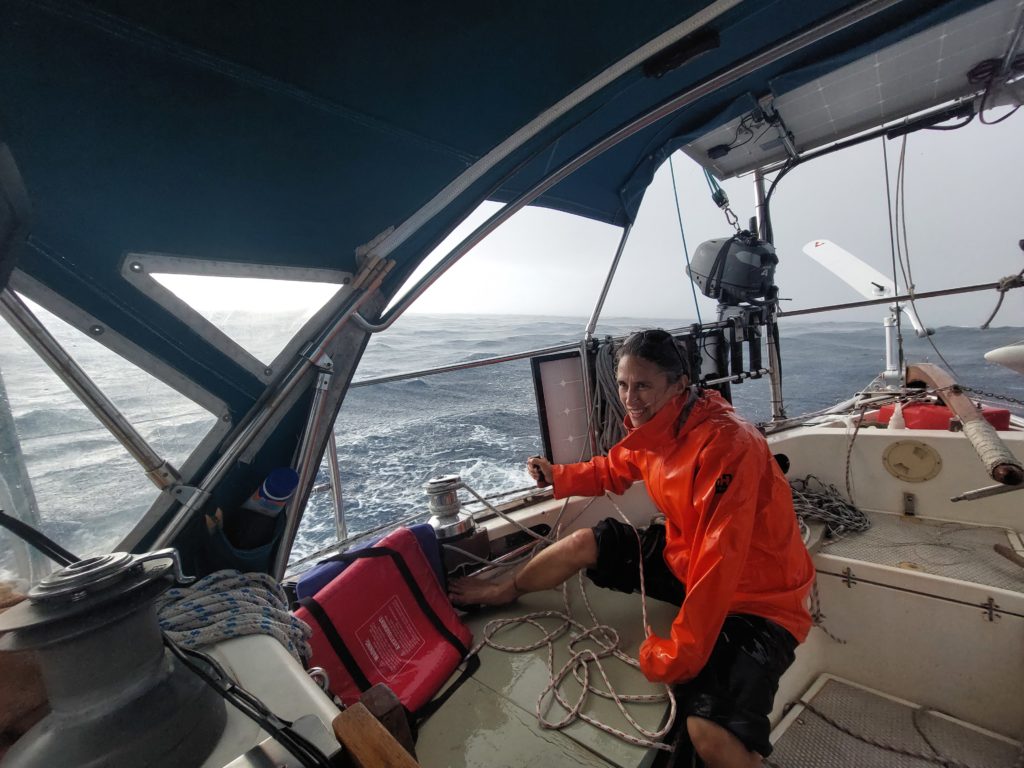
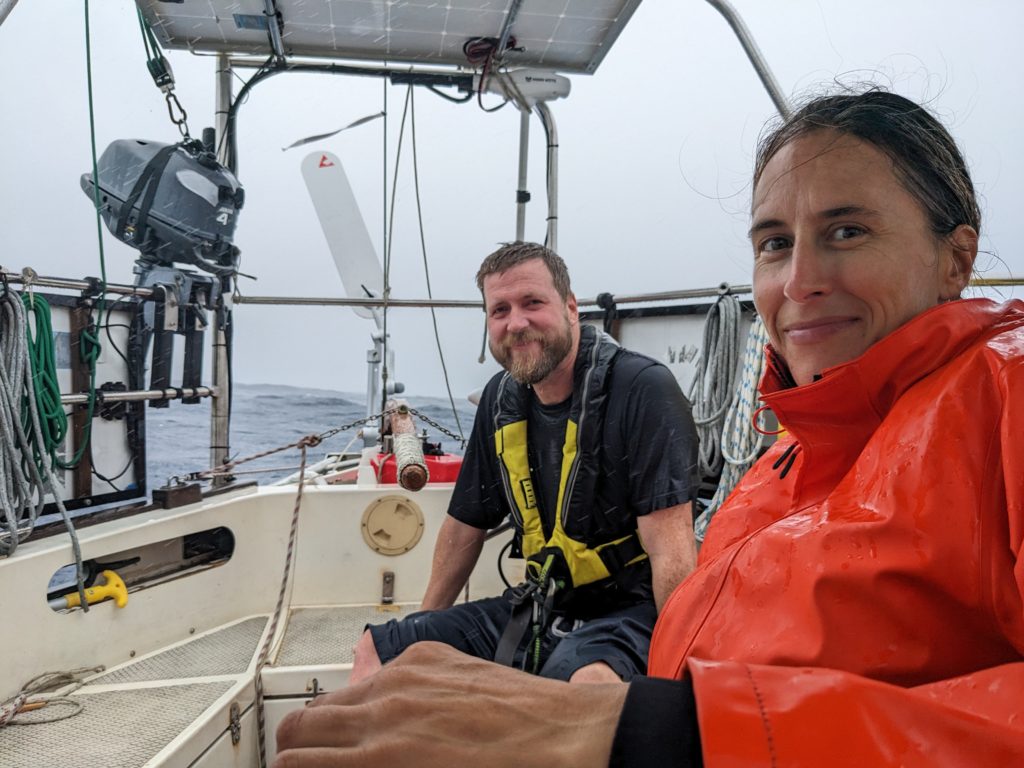
We crossed the equator at 126 degrees longitude. We had a small equator crossing ceremony, after which King Neptune boarded the boat, posed for a quick selfie, and requested that we all jump in the water.
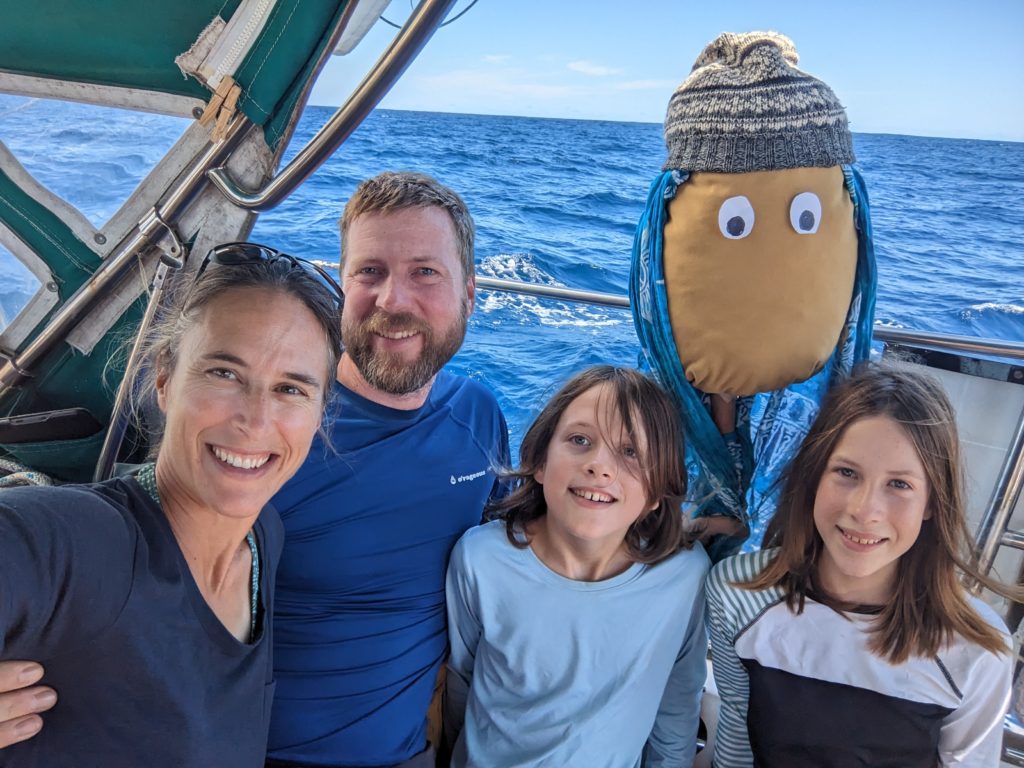
Shortly after that we entered the doldrums proper and the wind died entirely. We turned on the engine, we had packed extra fuel in case the doldrums were very wide. We encountered some uncomfortable sea here. The remnants of northern and southern weather systems collided to form an awkward cross swell. Even some of the grizzled shellbacks of our lower decks felt a little seasick, for the first time in weeks. After 24 hours of motoring through this, the sails filled once again and the motion of the boat improved immediately. We had found the southern trade winds!

Phase 4: Run to the Marquesas, day 19 to 23
I had always expected 15 to 20 knots of consistent winds in the trades, but what we found was much lighter. North of the equator we often had 8 to 12 knots of wind, which doesn’t allow us to move at our best speed. In the southern trades we had several days of 12 to 14 knots of wind on the beam. Combined with a favorable current, this was our best sailing of the whole trip. It was very comfortable and we made great time.
In the afternoons the boat would be hot. We hung up blankets for shade in the cockpit, and the temperature inside got up to 33 degrees Celsius. Small electric fans helped to keep it livable. We longed to jump into the incredible blue waters all around us, but the seas were a little big for swimming, and we were making good time.
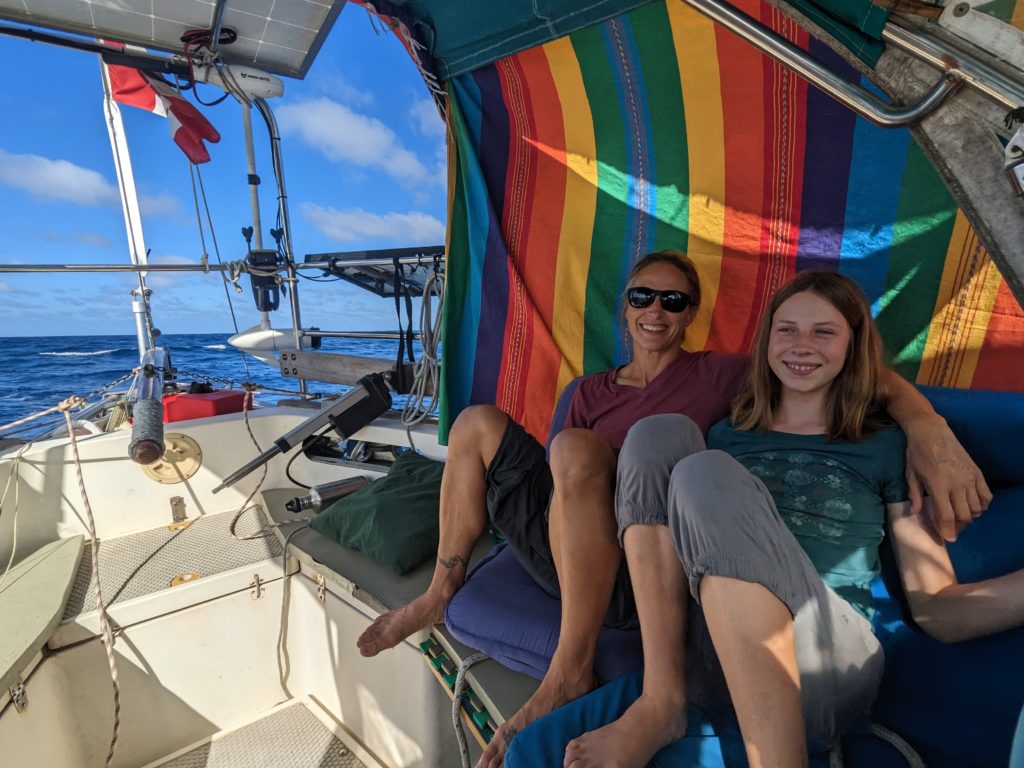
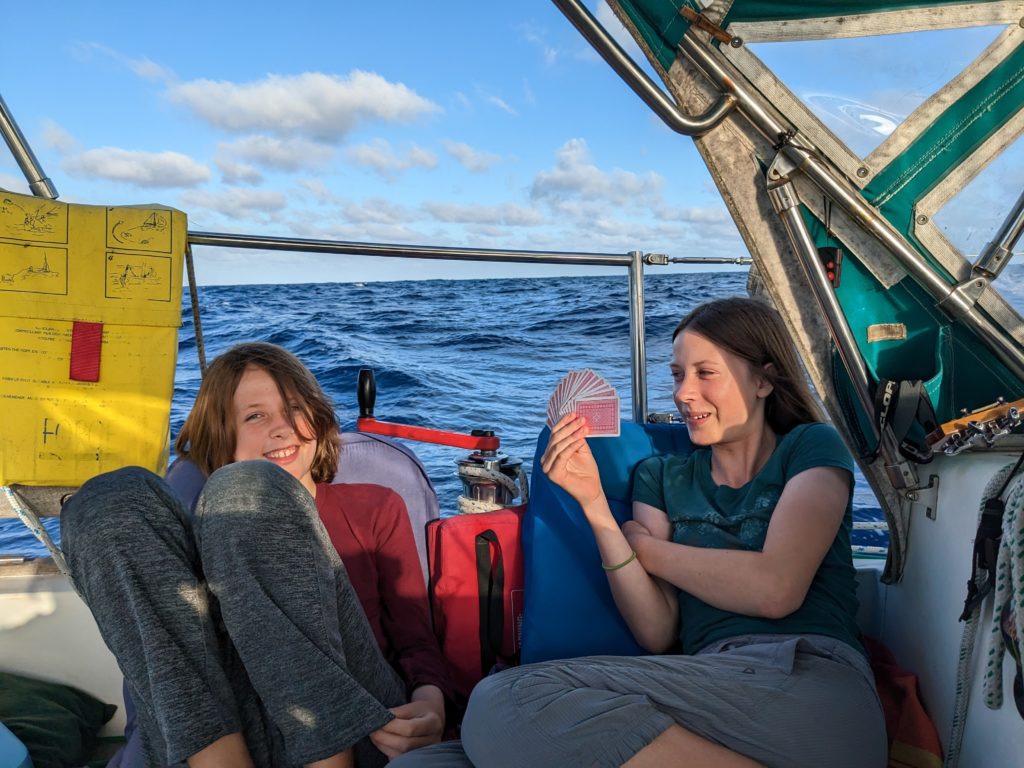
On April 1st after 23 days at sea we spotted land.
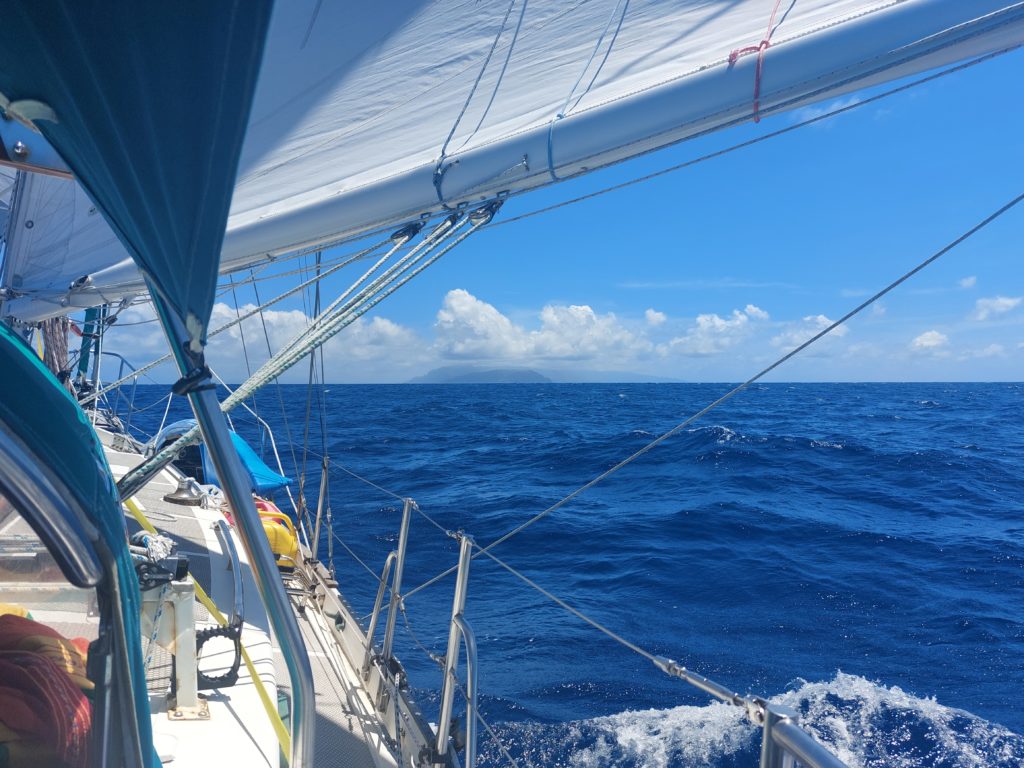
We dropped our anchor in the Marquesas that evening just at sunset.
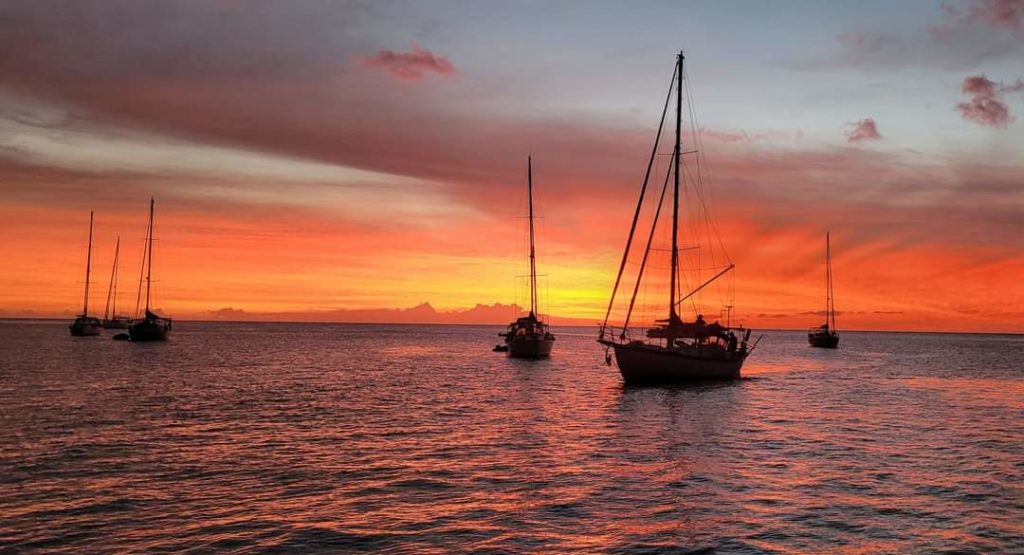
Looking back on it, the trip went great. By the end of the passage the kids were helping out and taking some time at watch. We were able to deal with the minor equipment failures that came along. We were lucky with calm weather and a reasonably narrow band of doldrums. We met new people. We managed our expectations.
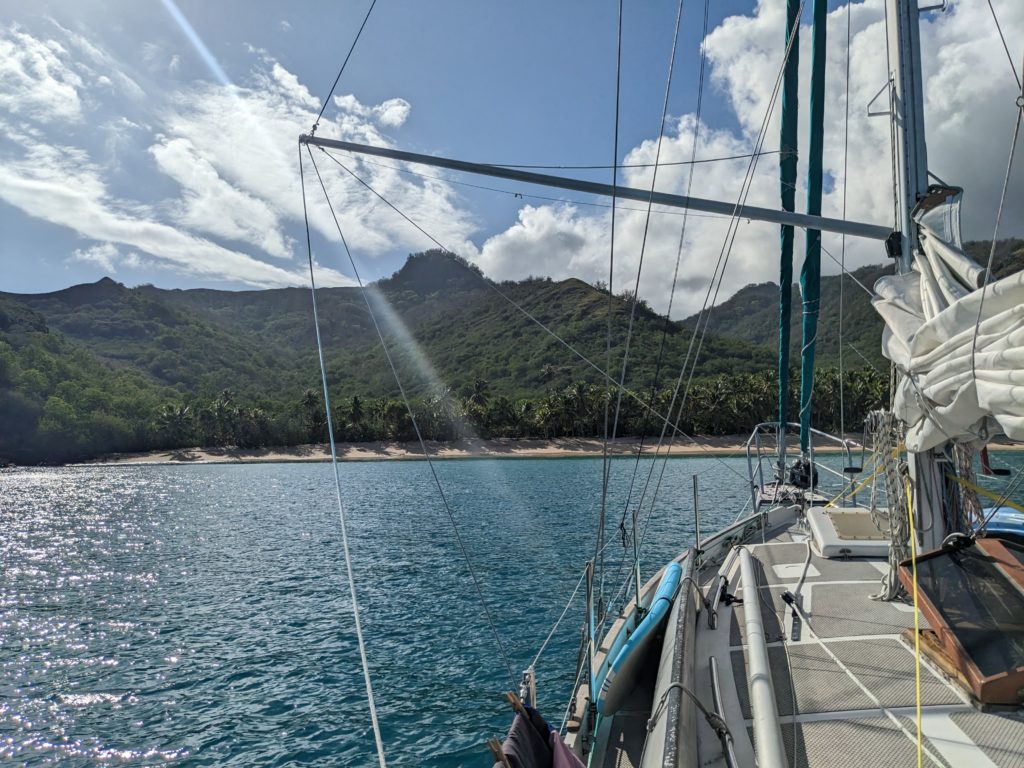
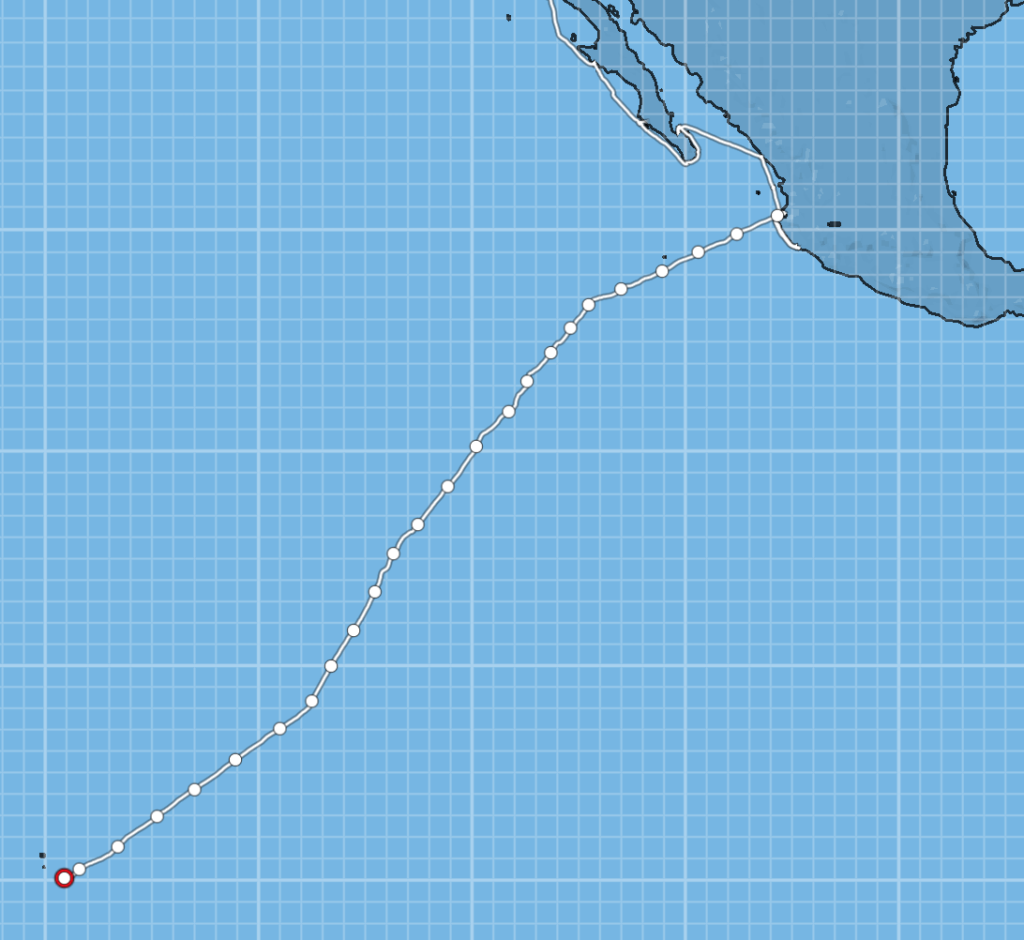
Next stop, a nap!
10 thoughts on “Part 20: Mexico to French Polynesia”
It was lovely to read the account of your trip. So glad you made it safe and sound. Hopefully we will meet up soon!
Wow, so proud, so excited and so thankful to have been able to follow your journey. Almost better than being there, as we were cool and dry and had lots of Chezies! Well done to all, and we very much look forward to the next chapters to follow. Stay safe and well, love you, Dad & Mom ❤️
I love following your travels! Thank you for sharing and we miss you!
Wow, so very cool and so incredibly proud and envious of my former gym buddy.
One day I would love to learn to sail, however, not sure I will ever manage such a voyage as this epic one.
Congrats! Cant manage to find words to describe how incredible this is.
So glad you made it – April 1st – was that planned?! Really enjoy your writing – Helicopter Guy will buy the book and so will many others!! You did know you are writing a book after – told my friends you are!
Thinking this is just the beginning – can’t wait to read more ! Hi to all – where should I mail cookies?
Love Auntie Shelley
Glad you and your lovely family made safe passage to the Marquesas. Having read many accounts of ocean voyages you are in the running for being one of the best.
So awesome. Deanna’s dad said the helicopter might have been from a tuna boat. Apparently they have them to spot tuna. Keep up the amazing updates when you reach civilization 🙂
Really enjoying reading your daily updates as you crossed the Pacific and following your progress and adventures since you started your journey. Such an exciting journey to share with your special sense of humour for friends and family.
You just have to write a book Doug.
It’s true Doug – “Helicopter Guy” will owe his fame all to you guys once you write that book!! 🙂
LOVED the pictures and was so happy it was a great passage – especially the flying fish falling out of the sky lol! Followed along on your daily updates while at sea – dolphins, squalls, and banana’s oh my!
Be our eyes and ears out there – can’t wait to hear more adventures from the good ship Mandolyn and her valiant crew!
Fair winds,
Richard
What a trip, thanks for taking us along, vicariously!!
Comments are closed.